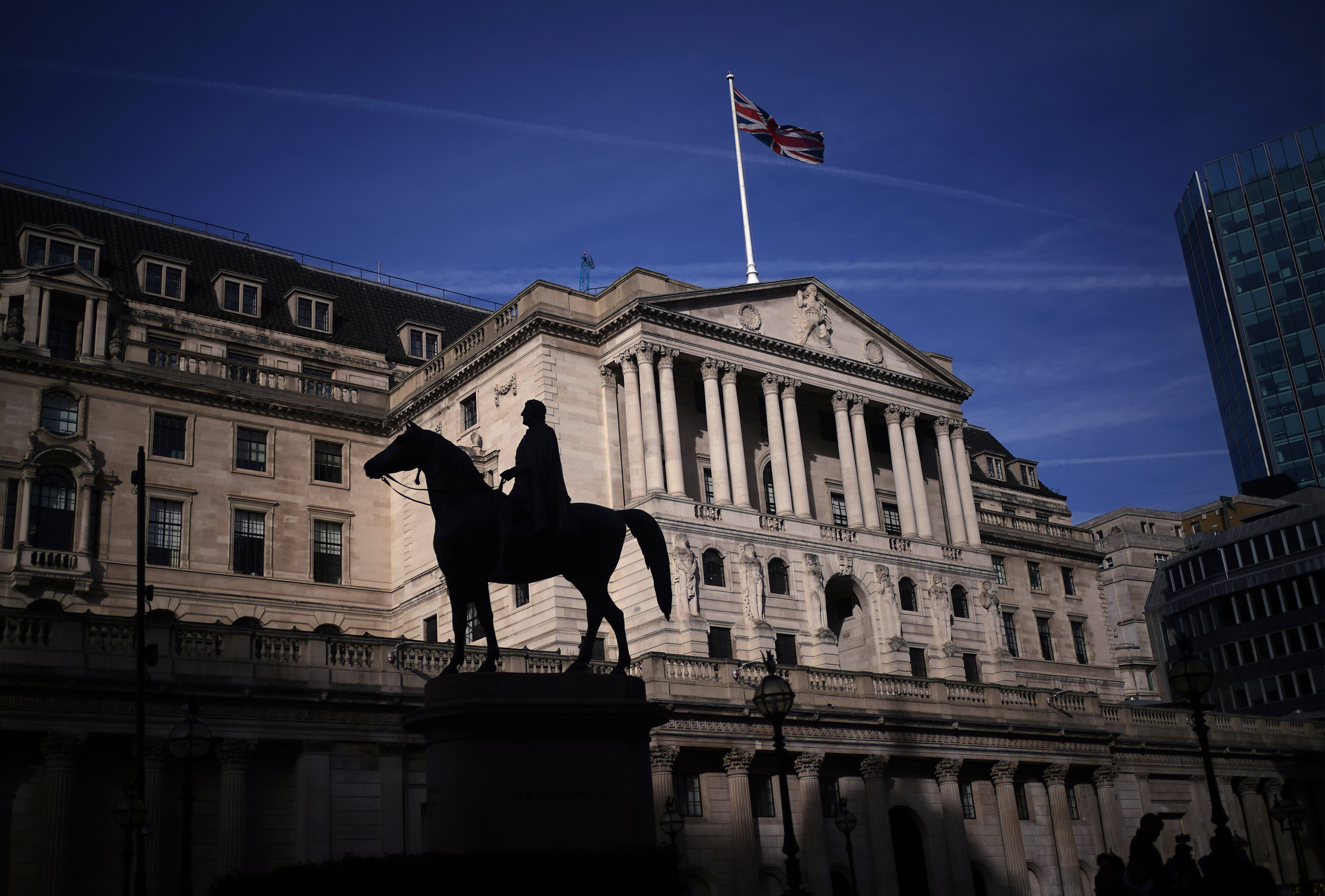The Bank of England may maintain interest rates, but the decline in inflation could lead to rate cuts in the future.

- Inflation in headline prices decreased more than anticipated to a 3.4% annual rate in February, marking its lowest level since September 2021, according to new data released Wednesday.
- The latest labor market data for January revealed a weaker trend across all key indicators, including slowing wage growth, rising unemployment, and a decline in vacancy numbers for the 20th consecutive month.
The Bank of England is predicted to maintain interest rates at 5.25% on Thursday, yet economists are split on the timing of the first reduction.
In February, headline inflation decreased more than anticipated to an annual 3.4%, reaching its lowest level since September 2021, according to data released Wednesday. The central bank predicts that the consumer price index will reach its 2% target in the second quarter, as the household energy price cap is lowered again in April.
Policymakers were pleased with the unexpected drop in both the headline and core figures, which came before this week's interest rate decision. However, the Monetary Policy Committee has not yet provided clear guidance on when it plans to make its first reduction.
The UK economy experienced a technical recession in the last quarter of 2023 and has been stagnant for two years due to a gas supply shock resulting from Russia's invasion of Ukraine. Berenberg Senior Economist Kallum Pickering predicts that the Bank will likely ease policy to support an economic recovery.
The MPC may give a nod to current market expectations for a first cut in June, which it can then cement in the updated economic projections of May, as suggested by Pickering in light of the inflation data of Wednesday.
"Gradually losing their hawkish bias and turning towards the question of when to cut rates, policymakers have been adopting a more dovish approach at recent meetings," he said.
At the February meeting, two of the nine MPC decision-makers voted to increase the main Bank rate by 25 basis points to 5.5%, while another voted to decrease it by 25 basis points. Pickering predicted that both hawks may choose to maintain rates this week or that one more member may opt for a reduction. He noted that the early moves of dissenters often signal upcoming turning points in the Bank's rate cycles.
Berenberg predicts that annual inflation will decrease to 2% in the spring and remain near that level for the rest of the year. The bank anticipates making five 25 basis point cuts to its main rate, bringing it to 4% by the end of the year. After that, it expects to make an additional 50 basis point cut to 3.5% in early 2025. Despite this, interest rates will still be higher than inflation for at least the next two years.
If the economic recovery gains momentum and policymakers become concerned about the possibility of strong growth leading to increased wage pressures in tight labor markets, the risks to our call will shift towards fewer cuts in 2025, according to Pickering.
Heading the right way, but not 'home and dry'
The MPC has been concerned about the tight labor market in the U.K., as it believed it could increase inflationary risks in the economy.
Last week, January data was published, revealing a weaker labor market picture across all metrics, including slowing wage growth, rising unemployment, and a 20th consecutive month decline in vacancy numbers.
The U.K. chief economist at Santander CIB, Victoria Clarke, stated that the inflation reading on Wednesday showed that the embedded risks have decreased and that inflation is likely to return to its target sustainably, following last week's softer labor market figures.
Despite the fact that services inflation has been following the BoE forecast since February and remains high, we do not anticipate the BoE to declare that it is "home and dry," particularly given that April is a crucial month for U.K. inflation, with the upcoming 10% National Living Wage increase and many companies already announcing or implementing their living wage-linked pay raises.

"The Bank of England requires information on the extent of the impact on pay-setting and price-setting resulting from the uplift, as well as specific data on the amount that is transferred over the subsequent months."
Santander believes that the Bank may decide to reduce rates in June, but Clarke thinks it would be more cautious to do so in August due to the volatility in labor market data.
On Wednesday, Moody's Analytics reiterated this sentiment, with Senior Economist David Muir adding that the MPC would require more evidence to be convinced that inflationary pressures are under control.
To keep inflation, wage growth, and services in check, further moderation is required. We anticipate this to happen in the first half of the year, leading to an announcement of interest rate cuts in August. However, there is uncertainty about the timing and extent of rate cuts this year, as stated by Muir.
Markets
You might also like
- Delinquencies are on the rise while a record number of consumers are making minimum credit card payments.
- U.S. economy state weighs on little changed treasury yields.
- European markets predicted to sustain positive growth.
- Trump hints at imposing a 10% tariff on China starting in February.
- David Einhorn believes we are currently in the "Fartcoin" phase of the market cycle.



















